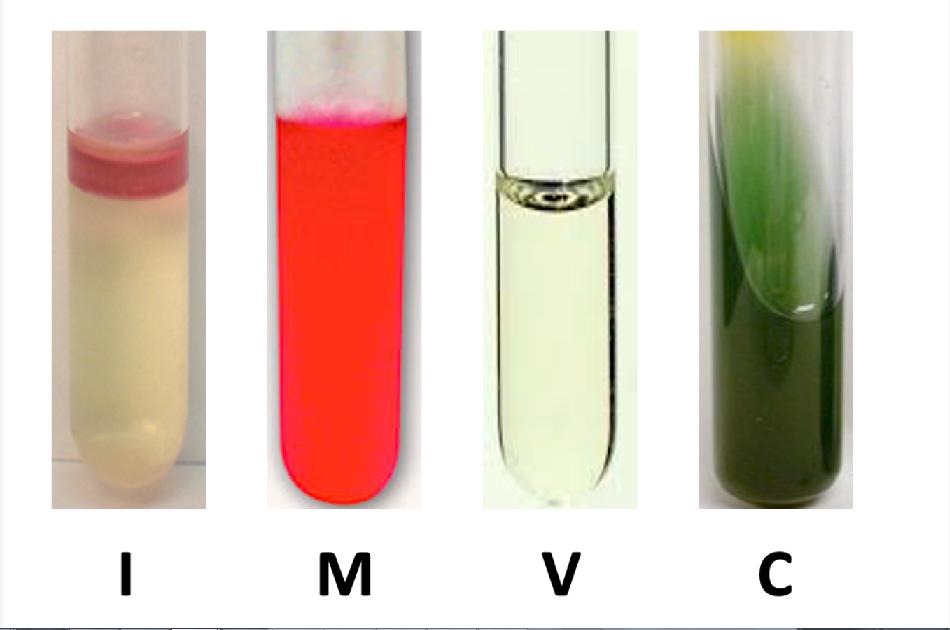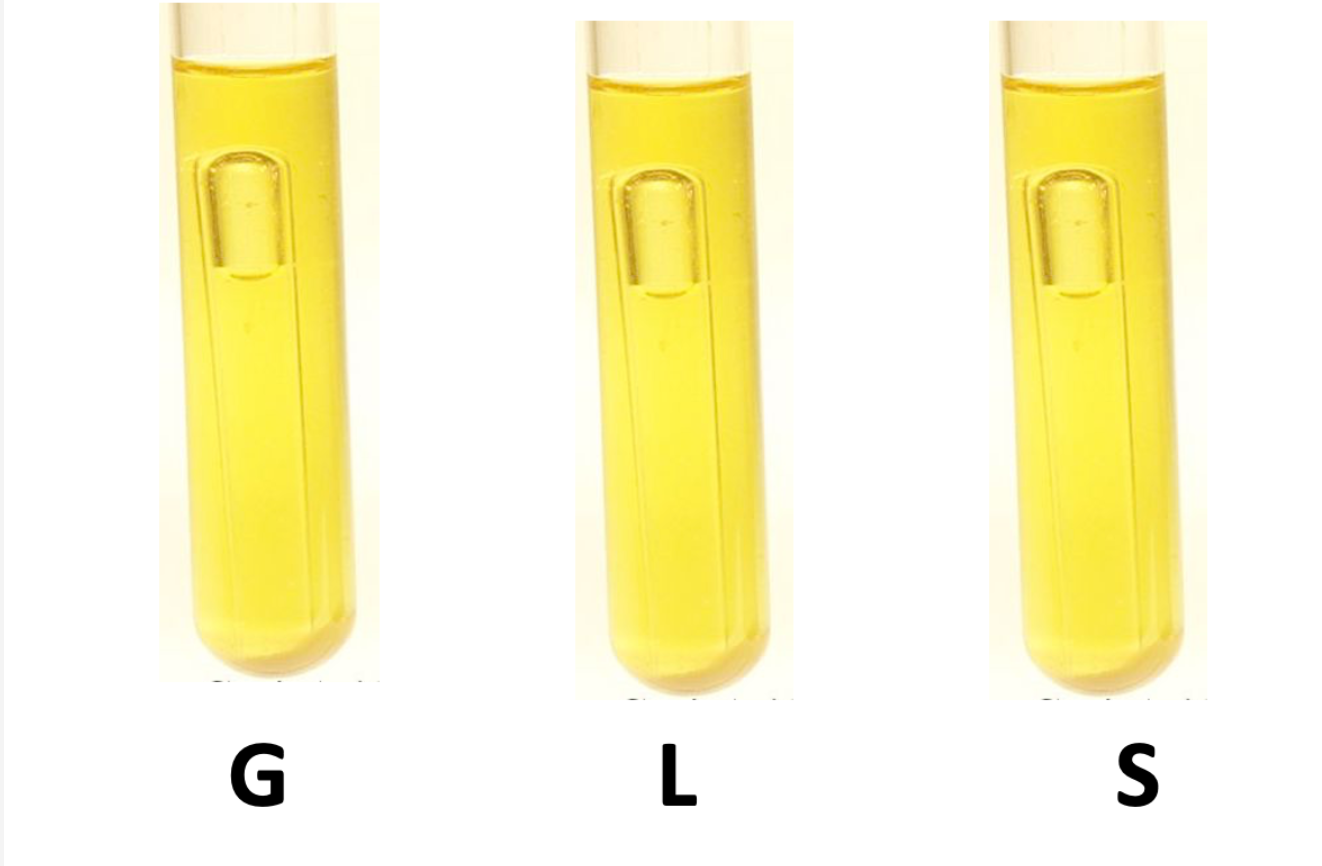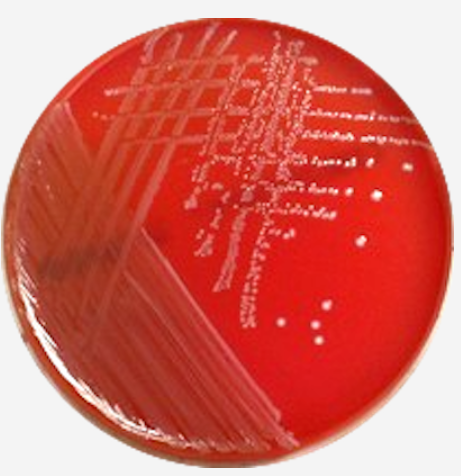Navigation » List of Schools, Subjects, and Courses » Bio 2010 – Microbiology » Lab Quizzes » Lab Quiz 4 » Lab Quiz 4 Sample Answers

Lab Quiz 4
Question 1
Among the Gram-positive organisms, Enterococcus durans is one of the few organisms that is not inhibited by the presence of bile salts. Which of the following is the most likely explanation?
- it grows well on skin or the integument system tissues, which have high bile salt concentrations
- it grows well in digestive system tissues, which have high bile salt concentrations
- It grows well in nervous system tissues, which have high bile salt concentrations
- it grows well in the pulmonary system tissues, which have high bile salt concentrations
Question 2
From the IMVIC test series, which of the following enzymes is needed to convert tryptophan into indole?
- stryptophanase
- mannitol deyhydrogenase
- tryptophanase
- catalase
- indolase
- tryptase
Question 3
This is an image of an inoculated DNAse Agar plate. Which of the following products is found in this particular agar?

- oligonucleotides
- triglycerides
- iron sulfide (FeS)
- pyruvic acid
- DNA
Question 4
This is an image of an inoculated Bile Esculin Agar plate. Which of the following differential agents is found in this particular agar?

- bile salts
- NaCl
- esculin
- lactose
- none of the above
Question 5
Suppose you are a microbiology laboratory technician. You have a culture with mixed bacteria. Your boss asks you to isolate the Gram-positive organisms ONLY. Which of the following media would the MOST appropriate media to begin isolating Gram-positive organisms?
- MacConkeyâ s agar
- Starch Agar
- Skim Milk Agar
- DNAse agar
- Columbia CNA agar
Question 6
This is an image of an inoculated IMVIC test series. Which of the following genus and species is most likely indicated in this image?

- Escherichia coli
- Salmonella enterica
- Pseudomonas fluorescens
- Enterobacter aerogenes
- more than one of the above is correct
- none of the above is correct
Question 7
This is an image of an inoculated Carbohydrate test series. Which of the following genus and species is most likely indicated in this image?

- Escherichia coli
- Salmonella enterica
- Pseudomonas fluorescens
- Enterobacter aerogenes
- more than one of the above is correct
- none of the above is correct
Question 8
After incubating your bacterium in potassium nitrate (KNO3) broth, you add alpha naphthylamine and sulfanilic acid. The broth immediately turns red. This result indicates the presence of which enzyme(s)?
- nitrate reductase
- nitrite reductase
- catalase
- super peroxidase
- more than one of the above is correct
Question 9
This is an image of an Oxidase test result. Which of the following Gram-negative genus and species is most likely indicated in this image?

- Escherichia coli
- Salmonella enterica
- Pseudomonas fluorescens
- Enterobacter aerogenes
- more than one of the above is correct
- none of the above is correct
Question 10
This is an image of an inoculated Columbia CNA Agar. Which of the following differential agents is found in this particular agar?

- colistin
- nalidixic acid
- red blood cells
- hemolysin
- none of the above is correct
- more than one of the above is correct
Lab Quiz 4 Answer
1. B. it grows well in digestive system tissues, which have high bile salt concentrations
2. B.tryptophanase
3. A. oligonucleotides

